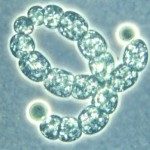Link to Pubmed [PMID] – 26958092
J Genomics 2016;4:7-9
The species Corynebacterium renale, Corynebacterium pilosum, and Corynebacterium cystitidis were initially thought to be the same species C. renale, but with different immunological types. These bacteria are the causative agent of cystitis, urethritis and pyelonephritis and are found usually as constituents of the normal flora in the lower urogenital tract of cattle. Therefore, we present the draft genome sequences of two pathogenic Corynebacterium species: C. renale CIP 52.96 and C. pilosum CIP 103422. The genome sequences of these species have 2,322,762 bp with 2,218 protein encoding genes and 2,548,014 bp with 2,428 protein encoding genes, respectively. These genomes can help clarify the virulence mechanisms of these unknown bacteria and enable the development of more effective methods for control.




